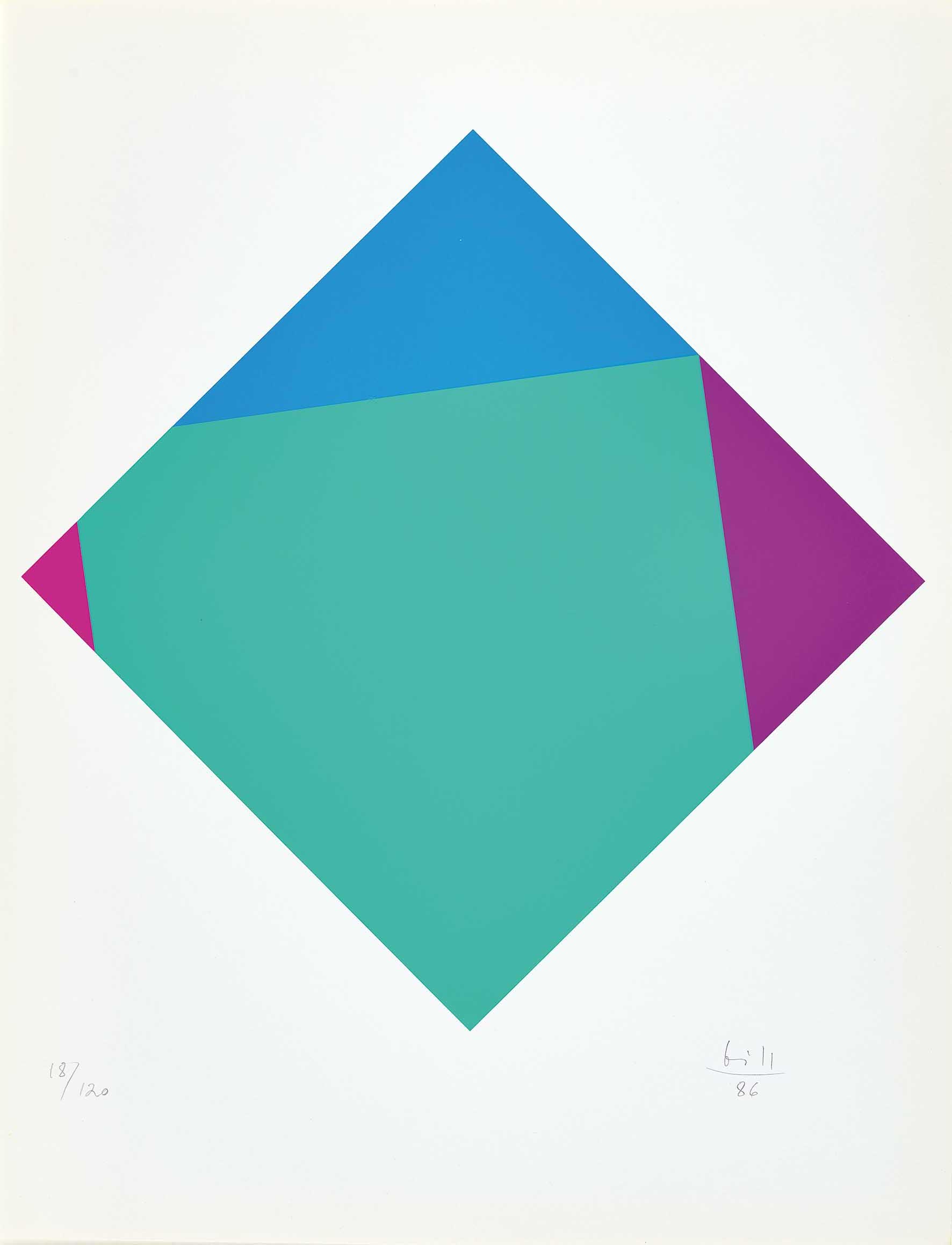Max Bill, a prolific artist, enjoyed a career that touched on all of art’s domains. A painter, sculptor, designer, graphic artist, theoretician, publisher, professor, exhibition curator, writer and politician, he alone embodies the modernity of the 20th century in all its diversity.
Born in 1908 in Winterthur, he attended Zurich’s Kunstgewerbeschule from 1924 to 1927, studying to be a jeweller. He is just nineteen years old when he enters Bauhaus in Dessau to train as an architect and take classes given by Wassily Kandinsky, Paul Klee and László Moholy-Nagy. With these masters’ teachings behind him, Bill opens an architect’s office in Zurich in 1930.
Around this time, too, he discovers Theo van Doesburg’s theories on Concrete art and produces his first paintings. His artistic world is now strongly influenced by geometric forms and mathematical concepts. Guided by the search for a rational art and advocating “the arts” integration in daily life”, Bill will eventually design electric plugs, watches, furniture – including the famous “Ulmer Hocker”, or Ulm stool – a set of dinnerware, advertising posters and buildings as well as paintings.
From 1932 to 1936 he is a member of the Abstraction-Création group in Paris, becoming friends with Jean Arp and Piet Mondrian, and later Georges Vantongerloo. In 1936 he develops his own theory about Concrete art. The “Die gute Form” show that he mounts in Basel in 1949 travels to numerous European cities and stands as a lasting source of inspiration for the world of design. From 1950 on Bill, one of the founders of Hochschule für Gestaltung Ulm, brings the spirit of Bauhaus to this design school in Germany.
The recipient of numerous awards, he takes first prize at the 1951 São Paulo Biennial. Bill died in Berlin in 1994, leaving behind a rich and multifaceted body of work that is based on great functionalist rigour. An important retrospective was devoted to him in 2008 in Winterthur.
Born in 1908 in Winterthur, he attended Zurich’s Kunstgewerbeschule from 1924 to 1927, studying to be a jeweller. He is just nineteen years old when he enters Bauhaus in Dessau to train as an architect and take classes given by Wassily Kandinsky, Paul Klee and László Moholy-Nagy. With these masters’ teachings behind him, Bill opens an architect’s office in Zurich in 1930.
Around this time, too, he discovers Theo van Doesburg’s theories on Concrete art and produces his first paintings. His artistic world is now strongly influenced by geometric forms and mathematical concepts. Guided by the search for a rational art and advocating “the arts” integration in daily life”, Bill will eventually design electric plugs, watches, furniture – including the famous “Ulmer Hocker”, or Ulm stool – a set of dinnerware, advertising posters and buildings as well as paintings.
From 1932 to 1936 he is a member of the Abstraction-Création group in Paris, becoming friends with Jean Arp and Piet Mondrian, and later Georges Vantongerloo. In 1936 he develops his own theory about Concrete art. The “Die gute Form” show that he mounts in Basel in 1949 travels to numerous European cities and stands as a lasting source of inspiration for the world of design. From 1950 on Bill, one of the founders of Hochschule für Gestaltung Ulm, brings the spirit of Bauhaus to this design school in Germany.
The recipient of numerous awards, he takes first prize at the 1951 São Paulo Biennial. Bill died in Berlin in 1994, leaving behind a rich and multifaceted body of work that is based on great functionalist rigour. An important retrospective was devoted to him in 2008 in Winterthur.















